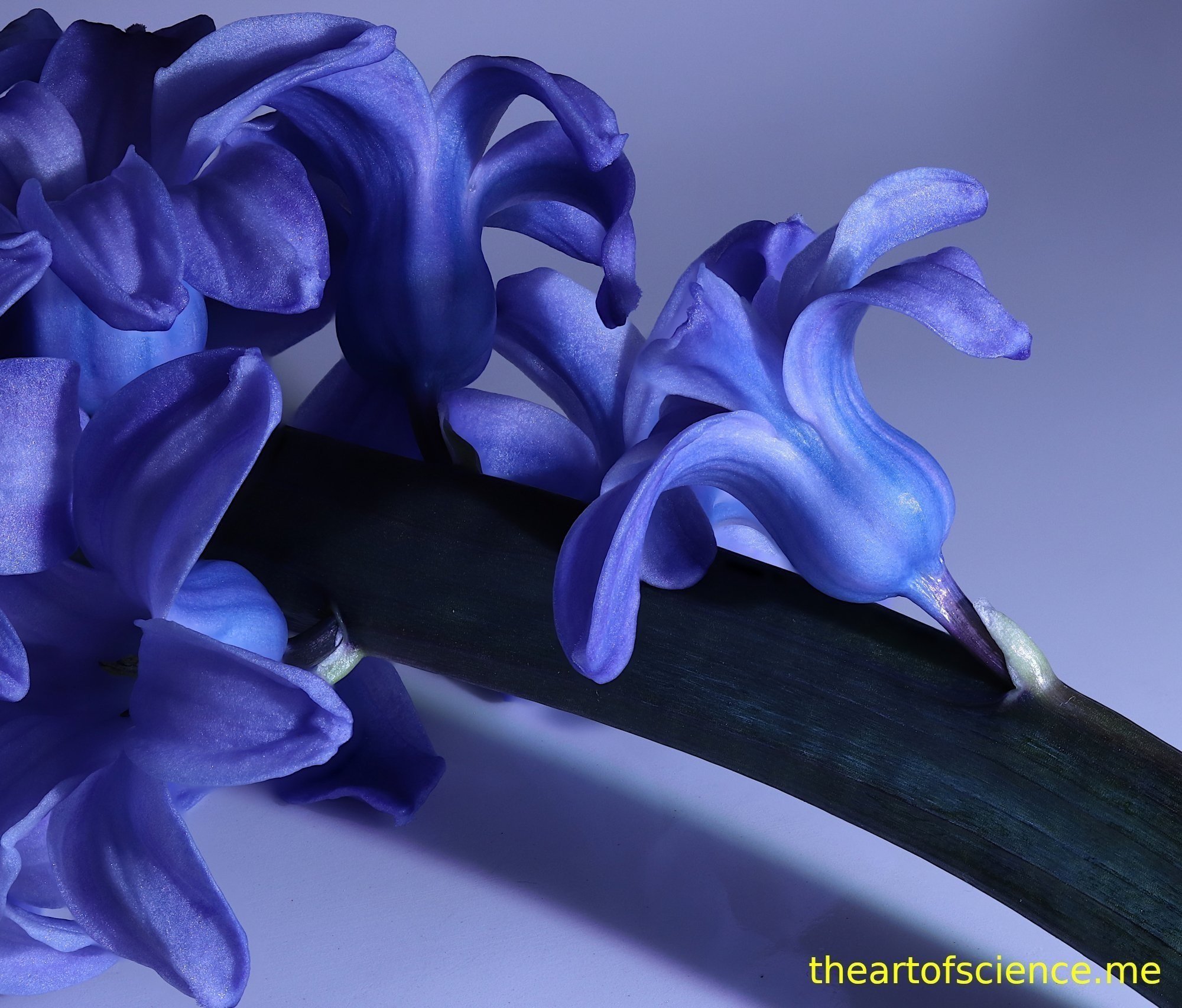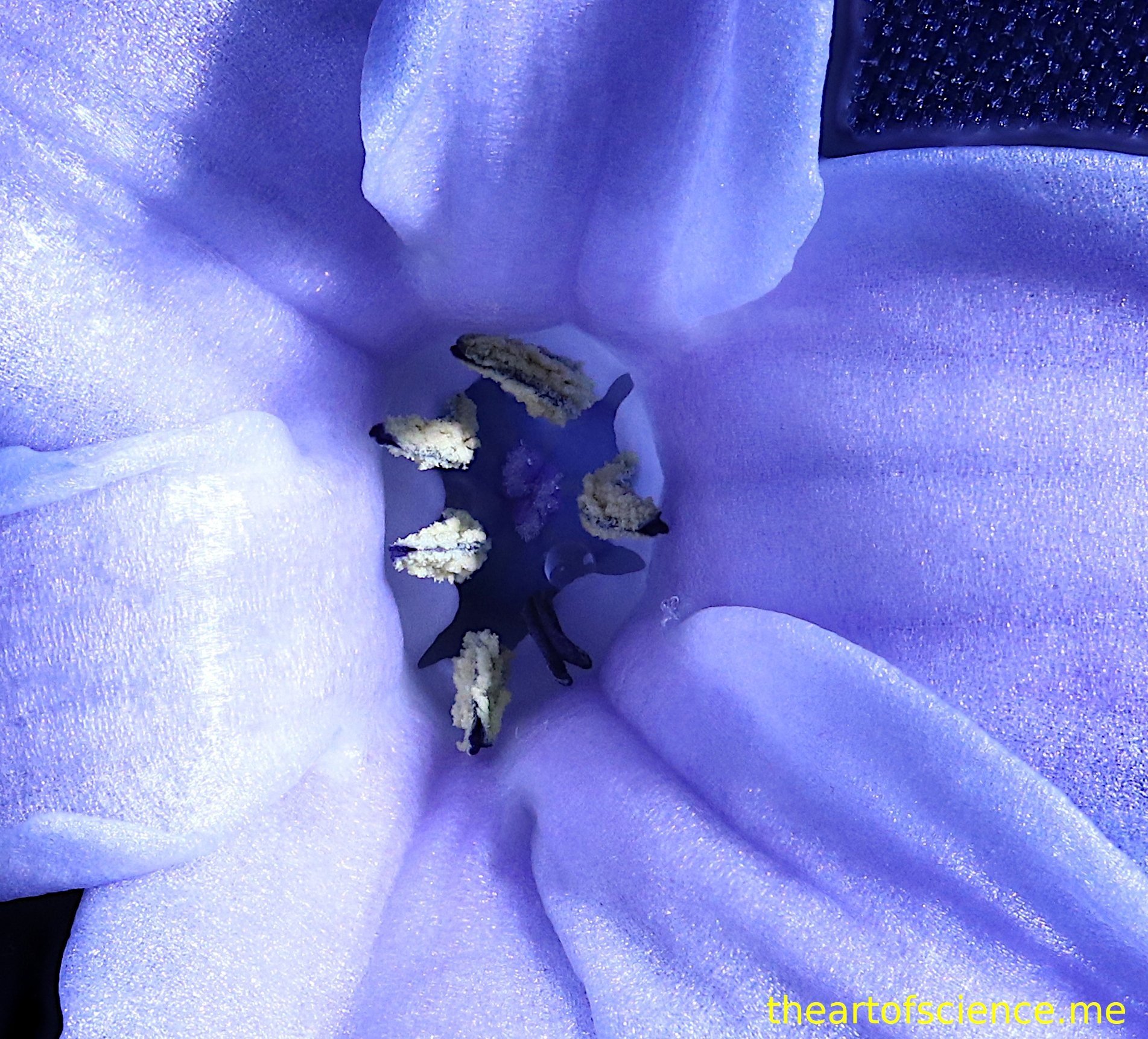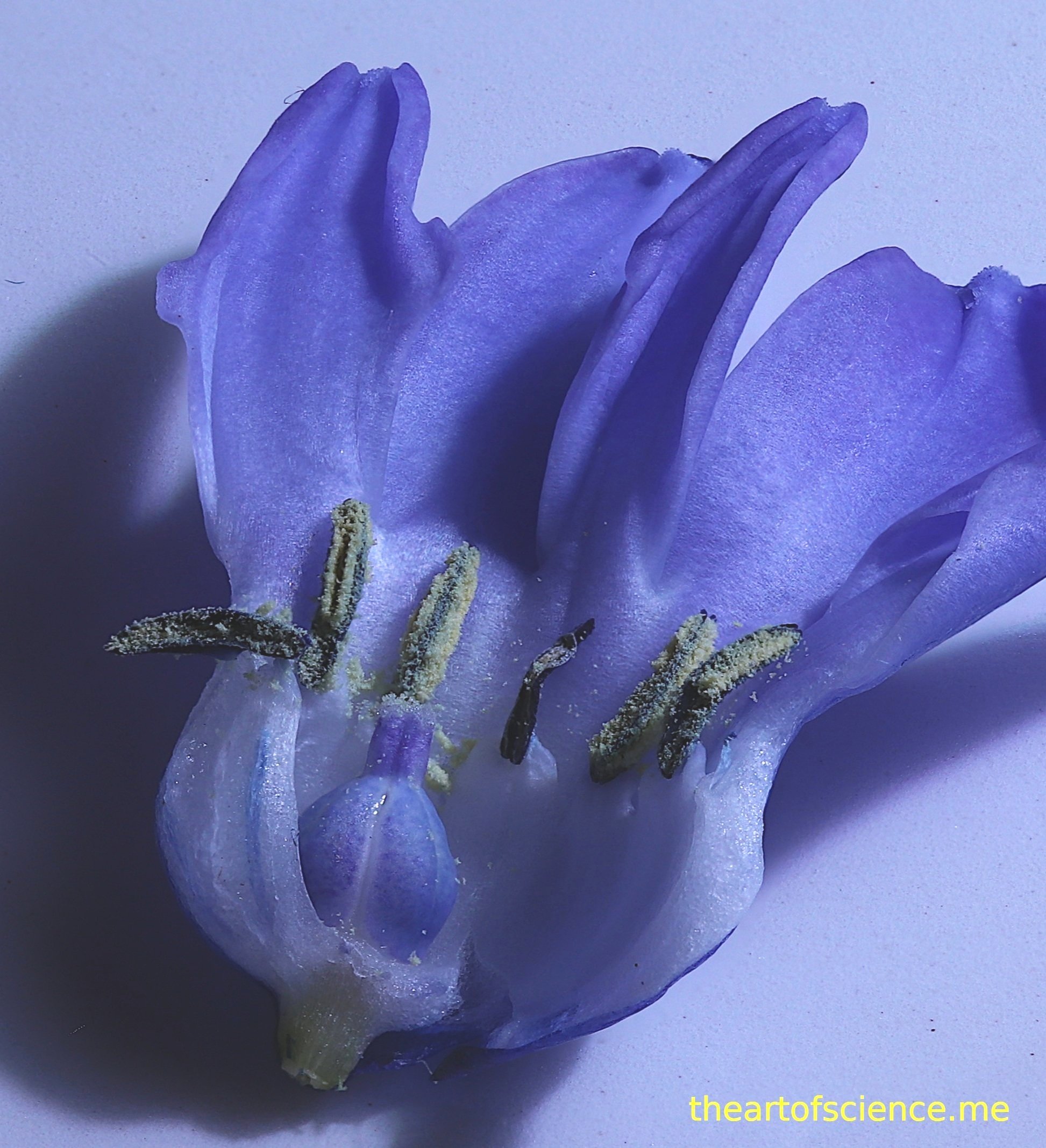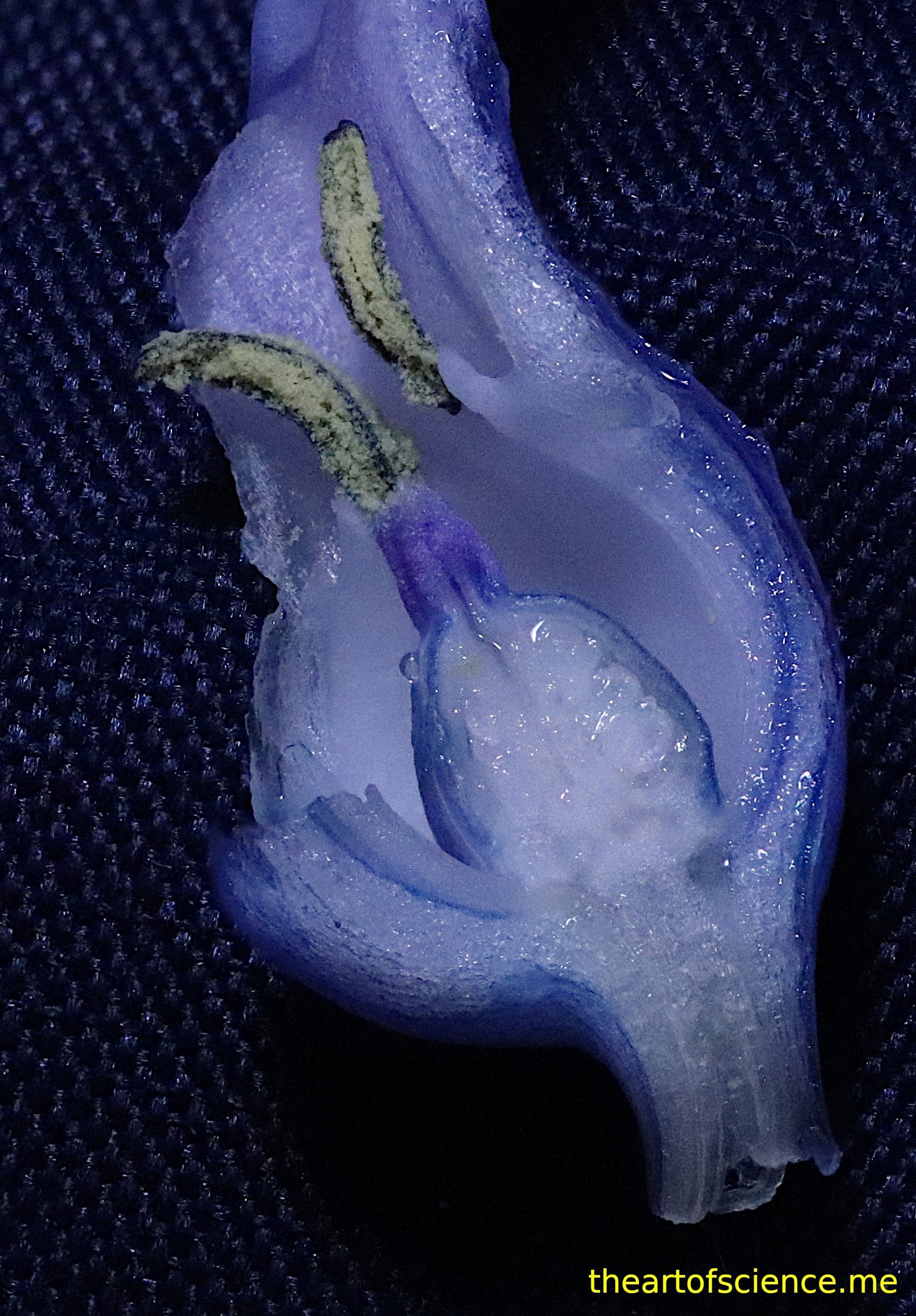Hyacinth Blue

Overlapping sword shaped leaves..
Overlapping leaves protect and support flower spikes during early growth.

Buds near the tip are tightly packed.

Beautifully sculpted like fine pottery.
Clean lines bound smooth curved surfaces.

Buds separating slowly.
No need to hurry perfection. Three outer sepals protect each bud. They show signs of opening.

Spectacular burst of blue on the raceme..
Racemes are flower clusters that bloom along leafless stems..

Short stalks attach blooms to the main stem.
Each flower has a tiny leaf-like structure that decorates the stalk where it attaches to the spike.
Sepals and petals are identical by now. Biologists/botanists invent a new word, tepal, adding to an already overloaded glossary of terms.

Petals slowly curl back along the stem.
Anthers and pistil gradually appear inside the bell-shaped flower.
Initially, petals and sepals lie perpendicular to the stalk before curling back.

Dark anthers slice open; bright yellow pollen grains escape.

Diving in for a closer look
The stigma with its rough surface is just visible in the centre of the picture.

Section through a hyacinth flower.
Anther numbers are limited but well-positioned to spread their heavy pollen load.
Ovaries sit in a hollow beneath the anthers. They are attached to the spiky stigma through a short style.

Stigma.
Large nectar droplets cling to the outer surface of the ovaries. Packed with scent molecules, they attract insects and fill your room with fragrance. Brushing past anthers on the way out, insects collect a fresh load of pollen.
Attracted by the scent of another flower and desperate for a sugar fix, the insect knows where to go. Clumsily navigating past the anthers, a glistening nectar globule of nectar in sight, it collides with the stigma. Pollen grains are discharged all over the show.
Pollination is the name of the game.

Pollination.
Unfortunately, I can’t turn my macro lens into a microscope.
Pollen grains are just visible on the jagged stigma.
As we read, pollen tubes are growing towards ovaries, searching for an egg to fertilise.

Ovarian Section.
Ovules nestled inside the ovaries.
Pollen grains discharge genetic material through their long fertilising tools into a receptive egg.
The next generation of seeds is good to go.

